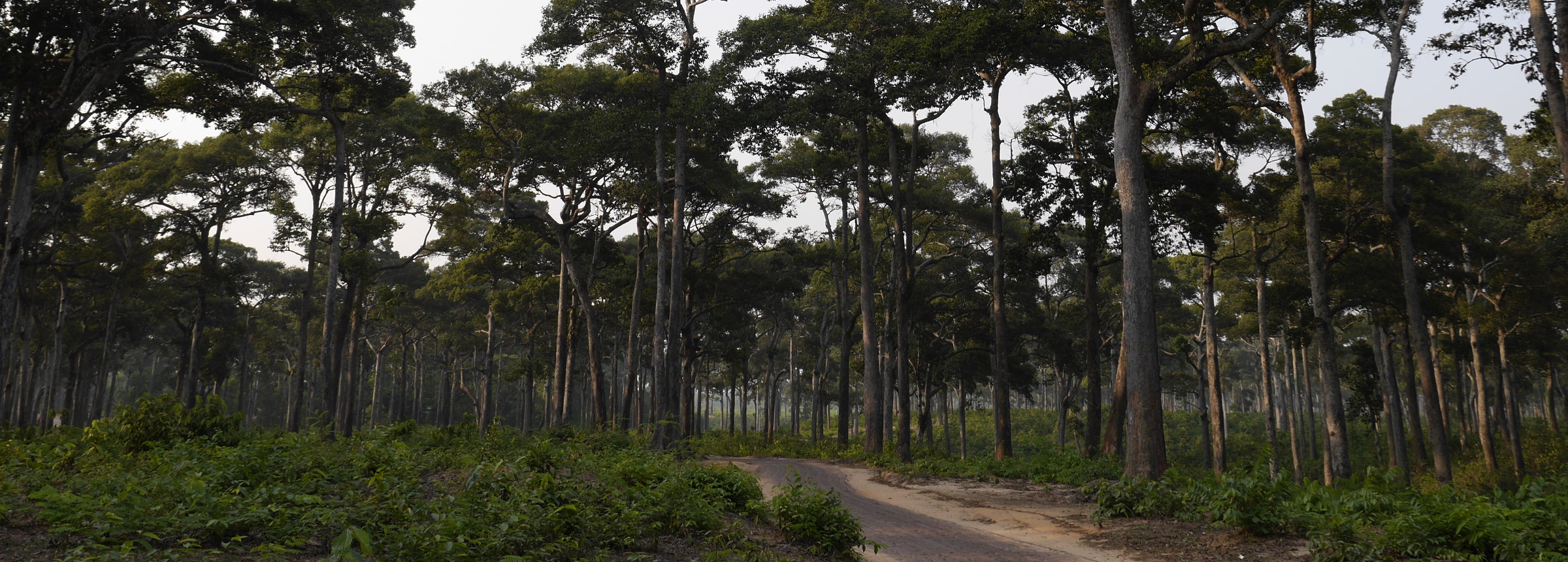
ACR Carbon Markets 101: Additionality and Baselines for Improved Forest Management Projects
Kurt Krapfl, Director of Forestry, American Carbon Registry at Winrock International
ACR is launching a blog series to explore and explain carbon markets and how ACR tackles various issues in our ongoing mission to set the bar for carbon credit quality. Our first post is on additionality and baselines for Improved Forest Management (IFM) projects.
Demand for voluntary carbon credits has doubled in recent years and is expected to grow as much as 10 times by 2030 and 30 times by 2050. Much of this demand is driven by a growing number of carbon neutral and net zero commitments from companies seeking to decarbonize their supply chains and offset unavoidable emissions with high quality carbon credits.
ACR credits for emission reduction and removals in a variety of sectors and for a number of different activities that are all critical to meeting Paris Agreement goals. In the industrial sector, ACR credits for methane reduction from landfills, coal mines and (coming soon) abandoned and orphaned oil and gas wells. In the forestry sector, ACR credits for afforestation / reforestation, avoided conversion of U.S. forests (coming soon), and for IFM.
ACR IFM Additionality and Baselines
Some of the questions we get asked most are about “additionality” and baseline setting for IFM. How do we ensure that project actions or policies exceed those that would have occurred in the absence of the project activity and without carbon market incentives? How do we ensure a credible baseline scenario from which to measure performance?
We thought these would be good topics to kick the series off with to explain ACR’s approach and how our IFM methodology addresses common questions around assessing additionality and establishing a crediting baseline.
IFM Background
In the U.S., the number of IFM projects in development is growing because standards bodies like ACR have published methodologies that are applicable to a variety of landowner types, including private industrial, private non-industrial, tribal, public non-federal, and non-governmental organizations. By attaching a monetary value to carbon sequestration, the carbon market presents an opportunity for different types of landowners to achieve a higher standard of forest management, while still supplementing their revenue goals and helping to combat climate change.
It is important to note that enrollment in an ACR IFM project initiates an immediately effective, legally binding, and public-facing 40-year commitment to grow trees older and larger, and/or to harvest less frequently or intensely. The projects quantify and credit carbon stored on the landscape as a result of this new long-term management commitment. IFM offers a cost-effective and scalable opportunity to sequester carbon now, as we pursue a transition to a carbon neutral economy by mid-century.
Additionality
Key to ensuring the credibility of carbon offsets is the concept of additionality. This assumption is a central tenet of all carbon offset programs and projects, not just IFM. It is important because there needs to be a high level of confidence that project actions or policies exceed those that would have occurred in the absence of the project activity and without carbon market incentives.
The ACR IFM methodology contains specific requirements for project proponents to demonstrate additionality. As a first step, all ACR IFM projects must be verified to meet a 3-prong additionality test, requiring demonstration that they 1) exceed all currently effective laws and regulations, 2) exceed common practice management of similar forests in the region, and 3) face at least one of three barriers to their implementation (financial, technical, or institutional).
The regulatory surplus test involves evaluating all existing laws, regulations, statutes, legal rulings, deed restrictions, or other regulatory frameworks relevant to the project area that directly or indirectly affect GHG emissions associated with a project action or its baseline candidates, and which require technical, performance, or management actions. The project action cannot be legally required.
The common practice test requires an evaluation of the predominant forest management practices of the region and a demonstration that the management activities of the project scenario will increase carbon sequestration compared to common practice. This involves evaluating and describing the predominant forest management practices occurring on comparable sites of the region and demonstrating that the project activities will achieve greater carbon sequestration than in the absence of the project.
Finally, the implementation barrier test examines factors or considerations that would prevent the adoption of the practice or activity proposed by the project proponent. IFM projects often demonstrate a financial implementation barrier because carbon projects are generally expensive to implement and coincide with harvest deferral and forgone potential revenues. This results in a low internal rate of return in comparison to the land potential that dissuades many landowners from implementing carbon projects. Technological and institutional barriers associated with carbon projects may also be proposed.
Determining Baselines
Enhancing carbon stocks above a baseline scenario is what allows carbon credits to be generated. Ensuring a reasonable baseline is equally important for ensuring credibility. Under ACR’s IFM methodology, determining the baseline involves a comprehensive assessment of site characteristics and predominant forest management practices in the region to develop an alternate forest management scenario that could reasonably be expected to occur in the absence of the project.
ACR baselines consider all legal constraints to forest management, as well as operational constraints to forest management such as site access, mill capacities, and hauling distances. Baseline silvicultural treatments must be substantiated by peer-reviewed or state/federal publications, attestations from regional foresters, or other verifiable means to ensure their relevance to the project area. In other words, they need to be substantially vetted and validated by independent sources.
Finally, to address the various management objectives and considerations confronting ownerships of different types, ACR IFM baselines employ a Faustmann approach to net present value (NPV) maximization, which considers prices, costs, and the time value of money in determining harvest schedules. Faustmann’s original 1849 work forms the basis for modern optimal rotation/investment decisions and forest economics. NPV discount rates based on peer-reviewed literature govern the intensity and temporal distribution of baseline harvests, considering the specific characteristics and motivations of each ownership type.
The ACR approach is a consistent, replicable, and verifiable metric upon which to assess management decisions across the major U.S. forestland ownership types. It also provides a transparent and systematic metric by which landowners, project developers, verifiers, and offset purchasers can base their assessment of an ACR IFM carbon project.
As a leading carbon offset standards body, ACR takes pride in ensuring our projects generate carbon credits that are additional to business-as-usual and generate meaningful climate benefits, both in the near and long-term.
We also recognize the complexities of this space and provide responses to commonly asked questions below:
Why Not Use Historic Baselines?
We do not use historical activity because, absent legal constraints, it does not necessarily represent the future management trajectory. Setting a IFM baseline solely according to recent harvest trends ignores the fact that in the absence of an abrupt paradigm shift, silviculture and forest management occurs and evolves over longer timeframes. Forest management is long-term and cyclical, and evolves based on financial needs, market conditions, agency priorities, and other factors. The future harvest scenario of any given forest is fundamentally unknown and management objectives change over time. Land can be sold and harvested. In the absence of a long-term, legally binding commitment, plans for how lands are managed can, and invariably do, change. While ACR requires that all legal constraints be modelled in the baseline, forest management plans are not legally binding and can be modified at any time.
Shouldn’t Project Proponents Justify the Baseline?
Yes. In addition to the requirement for ACR IFM projects to verifiably demonstrate that they exceed all currently effective laws and regulations, exceed common practice management of similar forests in the region, and face at least one of three implementation barriers, project proponents must also develop a baseline through a comprehensive assessment of site characteristics and predominant forest management practices relevant to the project area. ACR baselines consider all legal constraints to forest management, as well as operational constraints to forest management, such as site access, mill capacities, and hauling distances. Project proponents must describe the baseline harvest regime and justify the harvest regime/silvicultural practices with peer-reviewed studies or other reputable reports to demonstrate that what they propose is a realistic alternate management scenario. ACR requires the details of these analyses to be included in the GHG Project Plan. All baseline assumptions are verified.
Isn’t it possible that the forests in question would be managed the same way with or without carbon crediting?
Enrollment in an ACR IFM project represents an immediate change from previous practice because it initiates an immediately effective, legally binding, and public facing commitment to increase carbon stocks in the project area for four decades. It is a tangible, firm, and immediate action to increase and directly quantify carbon sequestration according to a known and transparent framework.
It is not common for a landowner with mature timber to make a long-term commitment (40 years in this case) to light harvesting and to legally forgo the opportunity to do so. As mentioned above, forest management is long-term and cyclical based on financial needs, market conditions, agency priorities, mill conditions, and other factors. Carbon projects typically provide a minimal cost recovery in comparison to the foregone revenues and opportunity cost associated with harvest deferral and managing for carbon sequestration. Carbon projects provide legal certainty, which was absent before, that the project area will increase its carbon stocks over time and that the property will be managed to a standard that far exceeds that previously allowable.
Does the project take the most aggressive harvest scenario off the table?
Yes, although carbon projects do much more than just take the most aggressive scenario off the table. Projects enrolling with ACR must maintain or increase their forest carbon stocks over the 40-year project commitment term (i.e., they cannot harvest more than annual growth). Doing so would be a reversal and they’d have to compensate ACR for the reversed credits. It is not common practice for a landowner with mature timber to enroll in a long-term, legally binding agreement that limits their capacity to harvest over time.
What about different kinds of landowners?
In the early days, the primary participants in IFM projects were large timberland owners. Over time, the market has expanded to include many different types of landowners. Evolving financial needs, market conditions, management priorities, and other factors are applicable to all kinds of landowners. Therefore, our rigorous criteria for additionality and determining baselines apply to all project proponents, who must justify why the baseline is a realistic management trajectory. Organizations that may have longer-term, institutional climate targets should also factor these into their decisions to enroll IFM projects and their justification of baseline scenarios.
How does ACR improve its methodologies over time?
All ACR methodologies must undergo a rigorous approval process that involves internal review, public consultation, and blind scientific peer review. ACR is the only registry to require scientific peer-review for the approval of its methodologies.
We are continually updating and improving our methodologies over time. The ACR IFM methodology, for example, was first approved in 2011 and is undergoing its fourth version update. The new IFM version 2.0 provides clarifications and updates to continuously strengthen the methodology, and reflects our deep knowledge base gained from implementing IFM projects for over a decade.
ACR’s IFM methodology version 2.0 is currently in peer review and is expected to be published in the summer of 2022.
Related Projects

